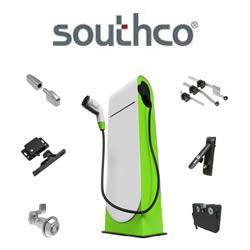PV by nature is an intermittent energy source that can be affected greatly (even over the course of seconds) by weather influences such as passing clouds. While this variability may not be a concern for the individual PV system owner, it is for utilities or system operators that may have tens of thousands of grid-connected PV systems within their service territories.
Jeff Ressler | Clean Power Research
What is PV fleet management and why is it important?
 As customer acceptance of PV grows and more PV systems are installed, utilities are grappling with the impact of ‘high penetration PV’ on their operations. PV by nature is an intermittent energy source that can be affected greatly (even over the course of seconds) by weather influences such as passing clouds. While this variability may not be a concern for the individual PV system owner, it is for utilities or system operators that may have tens of thousands of grid-connected PV systems within their service territories. Gaining insight into the performance of these PV ‘fleets’ is important to ensuring continued low-cost, reliable and safe energy delivery, and to allow PV to continue to grow.
As customer acceptance of PV grows and more PV systems are installed, utilities are grappling with the impact of ‘high penetration PV’ on their operations. PV by nature is an intermittent energy source that can be affected greatly (even over the course of seconds) by weather influences such as passing clouds. While this variability may not be a concern for the individual PV system owner, it is for utilities or system operators that may have tens of thousands of grid-connected PV systems within their service territories. Gaining insight into the performance of these PV ‘fleets’ is important to ensuring continued low-cost, reliable and safe energy delivery, and to allow PV to continue to grow.
Describe the technologies you've recently announced - what do they do, and who will use them?
We have an addition to our SolarAnywhere product family, a new service called SolarAnywhere FleetView. FleetView allows utilities and independent system operators to conduct planning studies and forecast power generation of their PV fleets in highly flexible and scalable ways, and at a fraction of the cost of doing it using traditional methods like detailed planning studies that rely heavily on expensive networks of ground-based irradiance sensors.
There are two important technologies embodied in SolarAnywhere FleetView. The first is SolarAnywhere High Resolution data, which is the first satellite-derived irradiance data available in the U.S. with a resolution of 1 km x 1 km at 1 minute-intervals. FleetView passes this data through patented fleet variability technology developed by our research team to quantify the impact of a fleet of systems given historical or forecast weather conditions. Aiding the calculation of PV power output, SolarAnywhere FleetView can catalog PV system specifications, making it possible for utility managers to understand PV system impact at macroscopic and granular levels, with virtual fleets being defined as a few systems on a single feeder or many thousands across an entire service territory.
Aren't utilities able to do this today?
PV fleet management requires true intelligence about what is happening ‘behind the meter.’ This information could come directly from each PV system (but very few systems, especially residential systems, are instrumented to the degree required), or it can be generated from ground data, but both of these options require significant investment in equipment and infrastructure.
SolarAnywhere FleetView is different in that it uses satellite-derived irradiance data, combined with patented fleet variability methodologies, to model the behavior of PV fleets – in effect, providing the ‘behind the meter’ information needed to optimize and largely automate planning studies. Another important benefit of SolarAnywhere FleetView is that it can be used to forecast PV fleet power output from a few minutes to up to a week ahead. This solves a critical need of energy providers to be able to dispatch energy reserves that traditional methods do not address at all.
Why is High Resolution irradiance data needed?
There are a couple of reasons that higher resolution data is important. SolarAnywhere High Resolution data has a temporal resolution of 1 km x 1 km, which means it will provide more accurate data in microclimates such as those found in the area around San Francisco, or in the Hawaiian Islands. One minute-or even lower resolution is important for being able to accurately measure ramp rates that can move up or down very quickly in certain weather conditions. SolarAnywhere High Resolution data is the first satellite-derived irradiance data available that can meet both these requirements.
What do your new patent awards cover?
Clean Power Research was granted three patent awards in April for systems and technologies related to calculating variability for PV fleets. Remarkably, we kicked off the patent process less than a year ago under a now closed U.S. Patent and Trademark Office pilot program called Green Technology, which allowed for accelerated consideration and processing of our filings.
As you've been developing these new technologies, were there any surprises?
As part of the development process we have worked with a variety of energy providers and educational institutions to validate the accuracy of SolarAnywhere High Resolution data and our PV fleet variability methodologies. One study in particular conducted in partnership with the California ISO validated previous study findings that the greater the geographic distribution of a PV fleet, the less variability there is on a fleet-wide basis. This has important implications for utilities and ISOs, as it demonstrates the value of geographically dispersed PV, and bodes well for increased PV penetration. In addition, the CAISO study was conducted using different resolutions of SolarAnywhere data to compare accuracy. Not surprisingly, the higher the data resolution (e.g., Standard 10 km x 10 km, 1 hour data versus High Resolution 1 km x 1 km, 1 minute data), the better the accuracy.
What was surprising from our validation studies was the quality of ground sensor data. Typically ground sensors are considered the ‘gold standard’ for irradiance data, but our research found that ground sensors were routinely subject to bias and missing data, both of which can lead to misleading results. With SolarAnywhere High Resolution data, it’s now possible to benchmark performance, which should lead to better study results in the future.
Tell us a bit about Clean Power Research and what you do in the PV industry.
Clean Power Research got started in 1998 with a simple premise of helping answer the question: “What’s the value of solar for me?” Answering this seemingly simple question is actually quite complex, requiring PV output modeling, incentive and electric rate analysis, bill savings comparisons and environmental calculations. This was the genesis of our first software product, Clean Power Estimator®, which is still widely used by utilities, manufacturers and others interested in promoting solar. From there we developed software products to meet the needs of other parts of the industry. Among these is PowerClerk®, an online incentive management service that is used by utilities and energy agencies across the U.S. to optimize incentive program administration. More than 130,000 applications have been submitted through PowerClerk, representing more than 2.5 GW of capacity.
In 2007 we partnered with the University at Albany (SUNY) and Dr. Richard Perez to develop SolarAnywhere, our irradiance data and analysis tool, and which is at the core of the company’s solar prediction offerings. Today much of our research is focused in this area, and utilities, state energy offices, engineers, developers, manufacturers, installers and financiers rely on our software products for project siting, planning and operations, incentive program management, and renewable energy sales tools.
How do you see the future of PV unfolding and what part will Clean Power Research play in that scenario?
As PV costs decrease and people begin to purchase PV systems without incentives, it will be harder for utilities to predict the growth of PV. This will be an exciting time in the marketplace as PV stands on its own merits, but makes it difficult for utilities and ISOs to confidently make decisions such as what types of infrastructure and equipment upgrades are needed, when to import power from elsewhere or build new power plants to meet energy reserve requirements, or whether to invest in storage or other smart grid technologies.
Tools such as SolarAnywhere FleetView will help energy providers be more agile in responding to these market forces by making it possible to, in effect, have an ongoing planning study where the impact of the PV fleet is constantly updated, as conditions change, at much lower cost than today. As a result, they’ll be able to right-size to actual conditions, reducing costs and preserving the value of their distributed energy investments. Clean Power Research is committed to supporting this market, and we’ll continue to evolve SolarAnywhere so that it provides value now and long into the future.
Jeff Ressler, President, Software Services
As the President of the Software Services Group at Clean Power Research, Jeff is responsible for the business and technical aspects of the company’s software services, including PowerClerk, Clean Power Estimator, PowerBill and SolarAnywhere. As a software industry veteran, he brings a wealth of experience in delivering highly available online solutions that customers value.
Jeff’s interest in the clean technology industry is driven by the fast pace of technical innovation and the opportunities to help inform markets about the value of renewable energy technologies. Seeing the parallels with the early software and PC markets, Jeff is applying his insight and expertise to delivering software solutions that quickly and cost-effectively evaluate the financial impact of renewable energy technologies.
Jeff's career includes stints at both Oracle and Disney in addition to more than 10 years at Microsoft. During his tenure at Microsoft, Jeff served as Director of Product Management for Exchange Server and Lead Product Manager for SQL Server, among other roles. For more than two years, he was the speech manager to Bill Gates, who was Microsoft's Chairman and Chief Software Architect at the time. Jeff holds a degree in Industrial Engineering from Stanford University.
The content & opinions in this article are the author’s and do not necessarily represent the views of AltEnergyMag
Comments (0)
This post does not have any comments. Be the first to leave a comment below.
Featured Product


